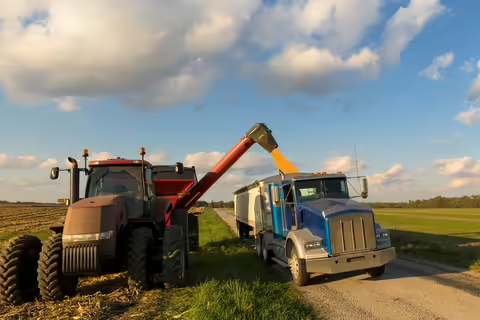DECATUR, Ill. – Harvest season is here, and with it comes safety issues on rural roads. Whether operating farm machinery or a motor vehicle, adopt a “safety first” attitude when sharing roads. During the fall harvest, there are more slow-moving farm equipment on the roadways, creating potentially hazardous traffic jams where motorists in a rush least expect them.
“A fully loaded tractor, combine or truck moves much slower than the average car or truck,” says Doug Gucker, University of Illinois Extension local foods small farms educator.
Transportation incidents, including tractor overturns, are the leading cause of death for farmworkers, according to the Center for Disease Control and Prevention.
Modern farm equipment is often wider than a traffic lane, particularly on bridges and raised roadways. Slow down when approaching farming equipment, leave plenty of space and be prepared to stop. A car going 55 mph only has 5 seconds to brake 300 feet, the length of a football field, to avoid rear-ending farm equipment traveling 15 mph.
Drivers should watch for a Slow-Moving Vehicle, SMV, sign – a bright orange triangle trimmed with red reflective tape, which is required by law to be on tractors, combines, and other farm equipment.
Drivers should not assume that the person operating farm equipment knows a vehicle is nearby. Operators cannot see drivers that are following closely or if they are traveling close to the side of the equipment. Approaching traffic needs to be prepared to allow wide equipment to pass.
Farmers will pull over or off to allow drivers to pass when it is safe, but they cannot move aside immediately since unpaved shoulders can be soft, wet, rutted or steep, which can cause farm vehicles to tip over.
SOURCES: Doug Gucker, Local Food Systems and Small Farms Educator, Illinois Extension
WRITER: Emily Steele, Media Communications Coordinator, Illinois Extension
ABOUT EXTENSION: Illinois Extension leads public outreach for University of Illinois by translating research into action plans that allow Illinois families, businesses, and community leaders to solve problems, make informed decisions, and adapt to changes and opportunities.
